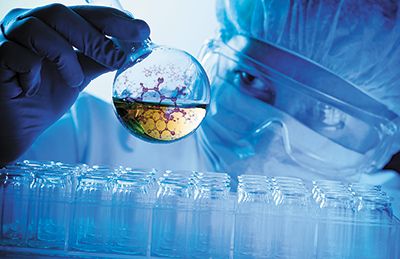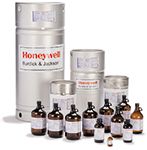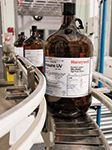Honeywell Burdick & Jackson
Our modern, ISO 9001-certified research and manufacturing facilities in Muskegon, Michigan and Seelze, Germany benefit from the Honeywell Operating System, a comprehensive, integrated manufacturing approach based on Six Sigma and Lean manufacturing methodologies that is designed to eliminate variation and waste and improve work processes rapidly and continuously.
Company Description
Honeywell Burdick & Jackson developed the world's first high-purity solvents, and today we are one of the leading global research chemical brands. Our portfolio of consistent, high-purity products is designed to meet the requirements of nearly every application-from demanding high-performance liquid chromatography to pesticide residue analysis. We are part of Honeywell's Fine Chemicals business, which has supplied high-quality research chemicals and specialty organic and inorganic compounds to the chemical and pharmaceutical industries for more than 100 years. Our scientists and engineers build on this heritage, developing innovative products designed to meet the requirements of ever-changing scientific applications and techniques.

Chief Chromatographic Techniques Supported
HPLC, LC–mass spectrometry (MS), UPLC, GC–MS, Capillary GC chromatography, GC-ECD chromatography, GC-FID chromatography, spectrophotometry, gel permeation chromatography, size exclusion chromatography
Markets Served
Honeywell develops and manufactures high-purity research chemicals and other materials used in environmental analysis, new drug discovery, medical diagnostic testing, quality control, research, and other laboratory applications. To address the market for oligonucleotide synthesis, our BioSyn® line of DNA/RNA solvents and reagents are processed to exacting high-purity and low water content specifications. Our products are available in packaging suited for lab scale through production applications.

Major Products/Services
Our portfolio of consistent, high purity solvents and blended reagents are designed for applications ranging from the most demanding LC–MS, HPLC, and GC analyses to general use applications requiring an ACS grade of solvent. The Honeywell LabReady® line of HPLC and LC–MS grade solvent blends are produced using our proprietary blending technology to our customer's exact specifications. Unmatched lot-to-lot consistency means that standardized methods do not have to be continually recalibrated or adjusted when solvent lots are changed. Our technical service experts are available to assist with product selection, delivery, and custom dispensing options to optimize safety and efficiency.

Facility
Our modern, ISO 9001-certified research and manufacturing facilities in Muskegon, Michigan and Seelze, Germany benefit from the Honeywell Operating System, a comprehensive, integrated manufacturing approach based on Six Sigma and Lean manufacturing methodologies that is designed to eliminate variation and waste and improve work processes rapidly and continuously.
Honeywell Burdick & Jackson
115 Tabor Road Morris Plains, NJ 07950
TELEPHONE
(800) 322-2766
FAX
(973) 455-6191
E-MAILSMCustomerService@Honeywell.com
WEB SITEwww.labchemicals-honeywell.com
YEAR FOUNDED
Founded by Orel Burdick and Bill Jackson in 1959

Analytical Challenges in Measuring Migration from Food Contact Materials
November 2nd 2015Food contact materials contain low molecular weight additives and processing aids which can migrate into foods leading to trace levels of contamination. Food safety is ensured through regulations, comprising compositional controls and migration limits, which present a significant analytical challenge to the food industry to ensure compliance and demonstrate due diligence. Of the various analytical approaches, LC-MS/MS has proved to be an essential tool in monitoring migration of target compounds into foods, and more sophisticated approaches such as LC-high resolution MS (Orbitrap) are being increasingly used for untargeted analysis to monitor non-intentionally added substances. This podcast will provide an overview to this area, illustrated with various applications showing current approaches being employed.
New Study Reviews Chromatography Methods for Flavonoid Analysis
April 21st 2025Flavonoids are widely used metabolites that carry out various functions in different industries, such as food and cosmetics. Detecting, separating, and quantifying them in fruit species can be a complicated process.

.png&w=3840&q=75)

.png&w=3840&q=75)



.png&w=3840&q=75)



.png&w=3840&q=75)














